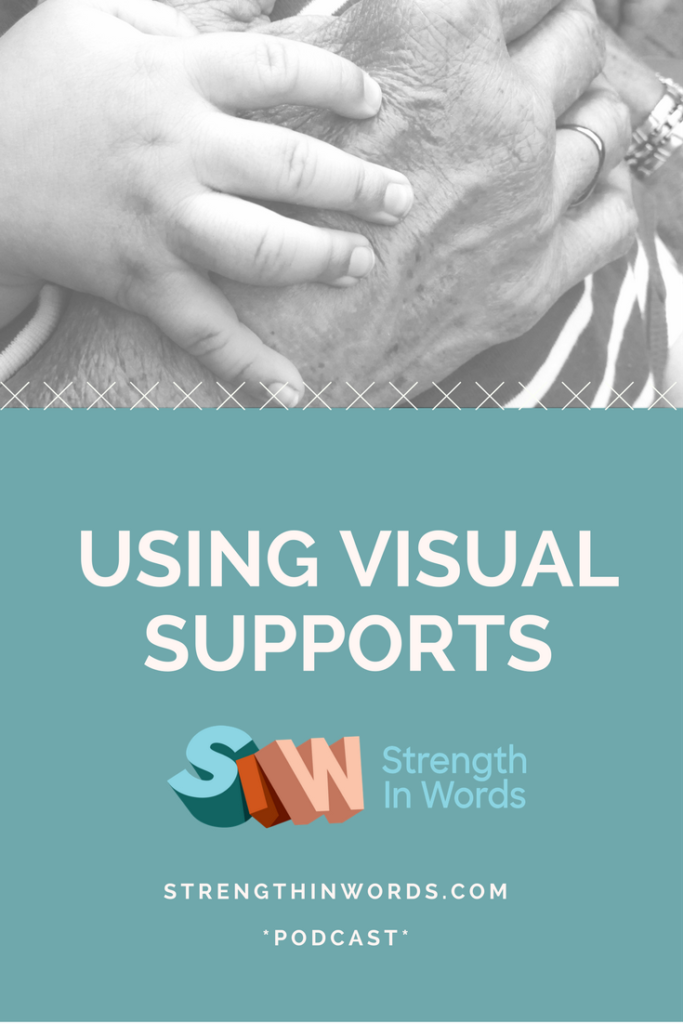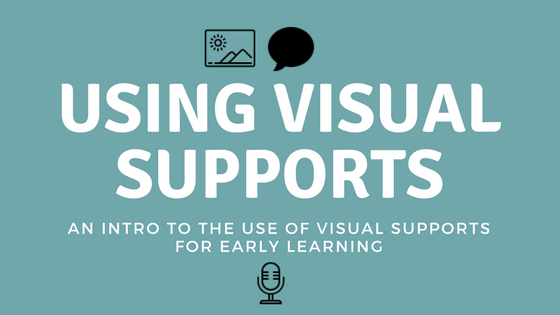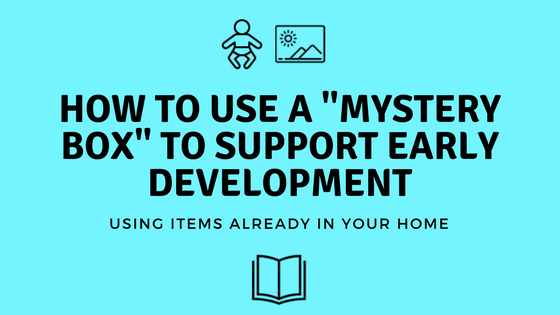What are “visual supports” and how are they useful for young children?

This episode of Learn With Less focuses on the use of visual supports (pictures, photographs, text – in the environment) to assist in early development.
Below is a transcript of this episode’s “Developmental Thought,” an excerpt from the full episode.
For an interactive musical family experience, please listen to the entire episode.
I mentioned last week in our episode, and in weeks past, that language learning happens through exposure, and through interaction.
Infants and toddlers who are learning to understand and express themselves through gestures and words are learning, essentially, about a system of symbols: that each object, person, action, idea, etc, has a specific set of sounds associated with it.
>>Don’t Miss Our Corresponding Blog Post!<<
But spoken language is fleeting – it’s only an auditory experience.
You say a word or a phrase, and as soon as it’s uttered – poof, it disappears! That’s why adding a visual – whether it’s an object you can touch, a photograph or a drawing – helps your young language learners. It adds a more concrete symbol of that “word” or of the experience of a word.
As humans, we are multi-sensory learners. Some of us learn best when we are aided by lots of visuals, more tactile experiences, etc. But giving your child the benefit of multiple ways to learn and understand can be very helpful.
Enter, Visual Supports
Using visuals also supports language learning because it allows you, the caregiver, to highlight the concept that each word is representative of a thing, a person, a concept, a social norm or an idea.
Language is a set of symbols, and we find symbols everywhere in our lives – out in our communities when we see the “green man” who tells us to walk across the street, the “woman” who informs us which of us should enter the door to that toilet, or the “stop sign,” which tells us what to do in our cars.
Highlighting these symbols when we’re out and about is not only great for language learning, but also for the development of early literacy! On that note, highlighting letters by going on a letter hunt, reading alphabet books, or stacking (or destroying) alphabet block towers are great ways to engage with your young child when highlighting print.
Using Visuals Throughout the Lifespan, With All Populations
You can see why visual supports can be helpful for young babies, as well as for older toddlers (or for that matter, adults!). They are helpful for pre-verbal or non-verbal children, as well as those who are starting to really acquire language.
All of us can benefit from visuals to help guide us through our daily life, both within routines at home or daycare or pre-school or work, and out in our communities. Sometimes visual aids can be helpful for rehearsing what will happen next, especially if they are new or less familiar experiences, or for helping to represent a transition that will soon be coming.
This practice has been used in the autism and other special needs communities for many years, and is a wonderful tool to help feisty toddlers of any developmental level with “self-regulation,” or that ability to manage impulses or emotions – which we all know is a struggle for any small child who is starting to learn that he can enact change on his world, and that he has his own opinions.
So let’s give our little ones lots of opportunities to succeed, by presenting information to them in lots of ways.

